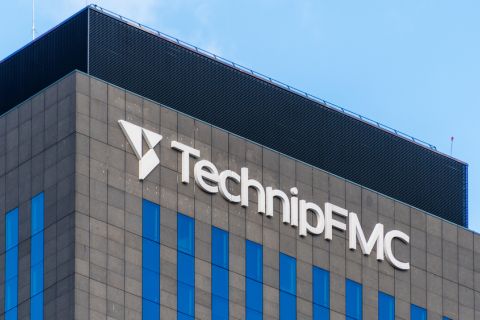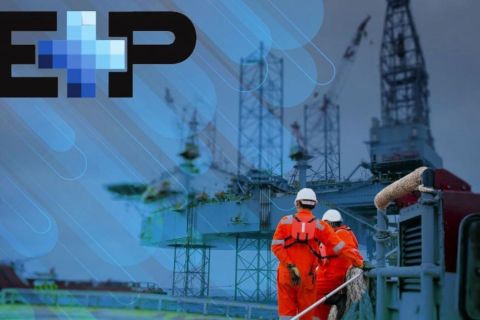Learn more about Hart Energy Conferences
Get our latest conference schedules, updates and insights straight to your inbox.
Presented by:

This article appears in the E&P newsletter. Subscribe to the E&P newsletter here.
Oilfield technologies, such as digital twins and other remote monitoring solutions, will be game changers in upstream oil and gas operations, according to a recent report by GlobalData.
With more oil and companies looking to automate their assets to reduce the impact of demand fluctuation on revenues, E&P recently caught up with three digital experts to talk about the role of innovation in enabling energy transition and driving deep decarbonization.
Meet the experts:
- Koheila Molazemi, Technology and Innovation Director, DNV
- Mark Freeman, President, EnerCorp
- Stuart Thomson, CTO, Ikon Science
E&P: With increasing focus to decarbonize operations while ensuring access to affordable energy, how significant are innovations for the oil and gas industry right now?

DNV
Molazemi: The impact of global warming is becoming alarmingly apparent, and there is a very short window to close the gap to meet Paris ambitions. There are innovation gaps and system complexity that need to be addressed. The energy system is highly complex, and cross-cutting deep decarbonization and mass electrification are unbroken ground. When we look at deep decarbonization, we are faced with two challenges. One challenge is to scale up existing renewable technologies and energy efficiency programs. Then we have the hard-to-abate sectors that we do not really have a solution for at the moment.
At DNV, we believe innovation has an essential role to play in enabling an accelerated energy transition and deep decarbonization.
Freeman: The oil and gas industry has a massive role to play in lowering carbon emissions. These two natural resources still provide the majority of the world's energy, so finding a cleaner way to produce them is paramount to future sustainability. The primary path to lowering the emissions footprint will be through innovation, better processes, better technologies and more efficient means for delivering oil- and gas-generated energy to consumers.

Ikon Science
Thomson: This is a very exciting time to be in the oil and gas industry. Understanding the subsurface not only plays an important role in exploration, but also in decarbonization and carbon storage. Digital transformation tools, such as Curate, enable oil and gas companies to leverage all their data for more accurate and faster decision-making by integrating all the rich data from legacy databases and applications into a single workspace for instant access and actionability, allowing companies to better understand those data.
Additionally, the opportunity exists to repurpose near end-of-life wells and fields for use in CO2 storage operations, and Ikon Science has collaborated with the British Geological Survey to demonstrate the incredible potential of such efforts. Utilizing reuse as an alternative to plugging and abandonment could potentially result in significant cost savings while satisfying sustainability goals.
E&P: Can you discuss the latest technologies and solutions that your company is deploying in the oil field?
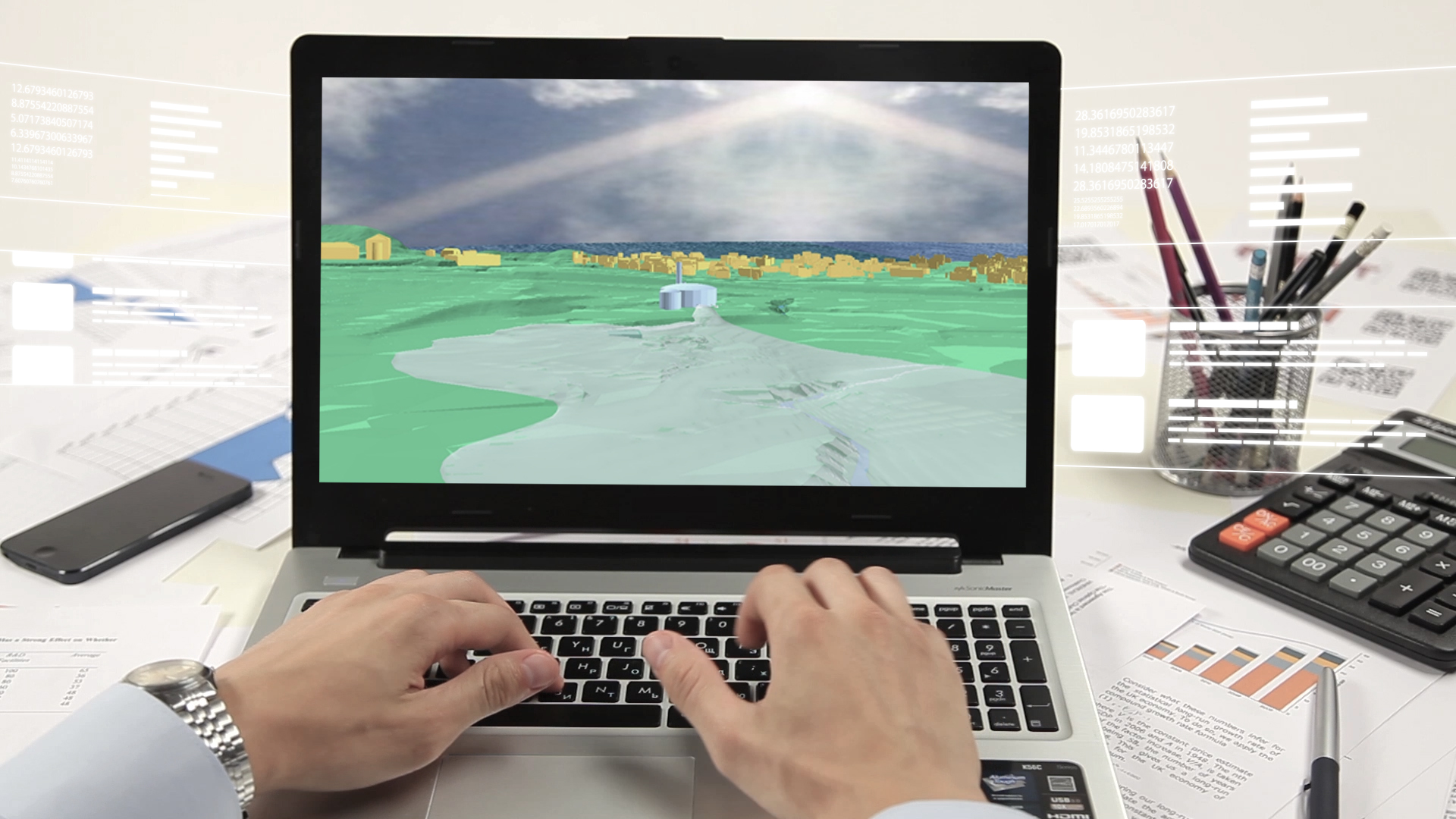
Molazemi: At DNV we collaborate closely with customers to enable an accelerated energy transition journey by combining our domain expertise with innovation and digital excellence. Some of the latest technologies we are working on are in the field of hydrogen safety and CO2 modeling, for example, and are validated with experiments carried out in DNV’s Spadeadam Research and Testing Facility.
Our Energy Transition Outlook report forecasts that decarbonizing hard-to-abate sectors requires far greater scaling of hydrogen. But for hydrogen to gain broad acceptance and adoption, industry and regulators will need to establish robust safety standards.
Similarly, the transition to a low-carbon society is reliant upon bringing in new and growing technologies, such as carbon capture and storage (CCS) technology, to reduce the CO2 emissions to the atmosphere. There is a need for reliable consequence models for safety assessments, design of barriers and documentation of CCS safe design. To ensure the highest safety standards, it is critical to have tools that simulate what actually happens if accidents occur. Earlier this year, Equinor and more recently TotalEnergies partnered with DNV to further develop DNV’s KFX CO2 computational fluid dynamics software for this purpose.
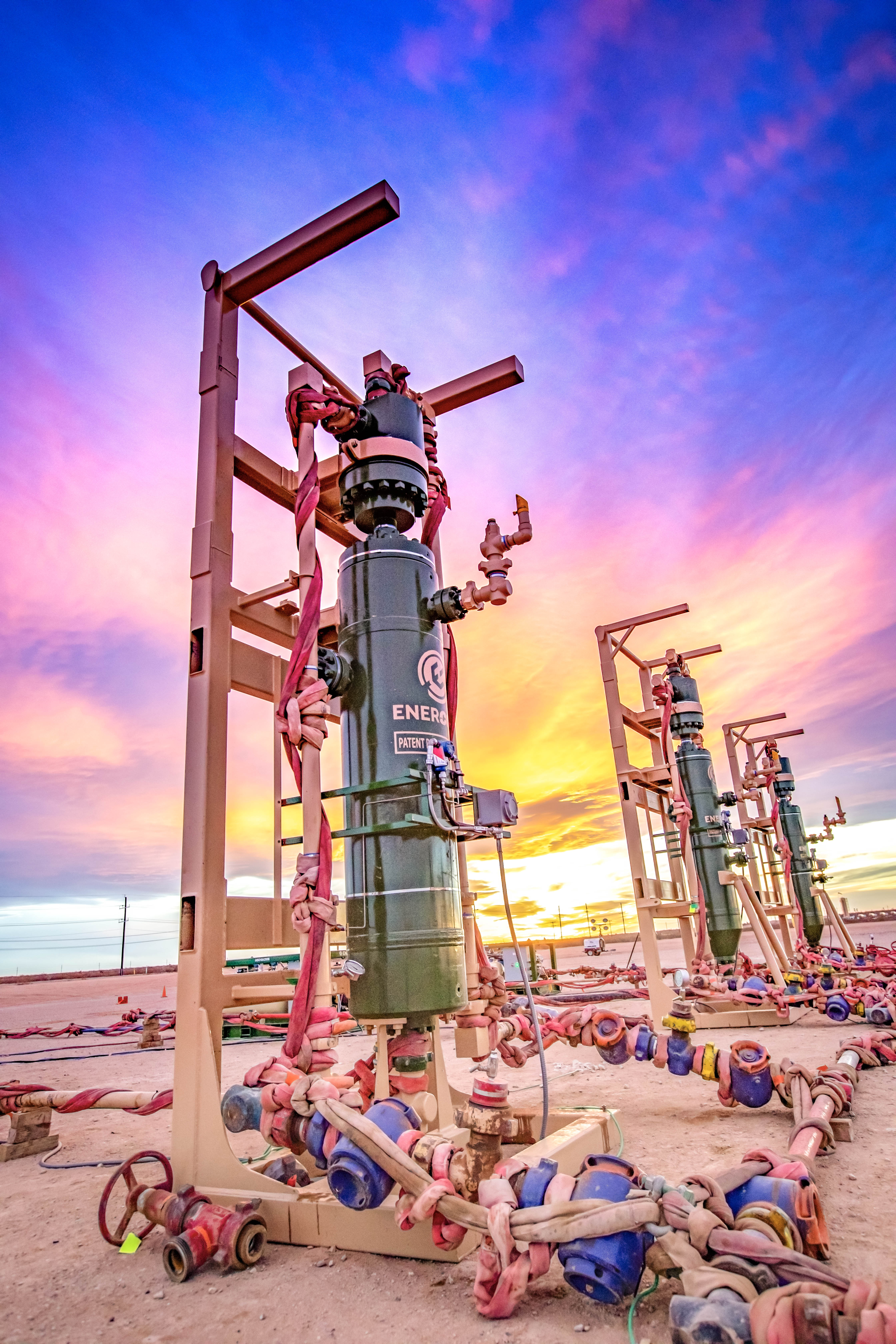
Freeman: EnerCorp is focused on enhancing operations in the flowback and sand management space. Specifically, we are developing technologies that significantly reduce the amount of equipment and personnel required to operate a job while also lowering the emissions profile. As we are successful with these technologies, we will continue to lower the cost of operations, reduce human exposure and improve the environmental footprint.
A little over three years ago, we introduced the Sahara Advanced Cyclone. This product has the highest sand capture rate of any cyclone in North America land. The Sahara has enabled the equipment and personnel footprint for flowback to be reduced dramatically and has allowed operators to safely flow directly to their production facility to lower emissions.
In 2021 we introduced eFlowback. This ecosystem of technologies completely automates the flowback and sand management process. This evolved service offering eliminates human exposure and reduces carbon emissions even further.
Thomson: Siloed data lead to inconsistent and incomplete interpretation of those data resulting in lost opportunities, cost overruns and suboptimal decisions. Our knowledge management solution, Curate, integrates data from any source—and any number of third parties—into a single workspace, allowing users instant access to historic and current subsurface data with streamlined, easy-to-use workflows enabling superior data democratization and business learnings driving faster and more accurate decision-making. Curate not only enables oil and gas companies to drill smarter, faster and safer, but it can also help identify optimal CO2 storage opportunities through well repurposing.
Additionally, our new Attribute Analyzer is built for purpose for geoscientists trying to get more out of QI inversion products. It provides practical insight and analysis with the right mix of ease of use, elegant visualization and targeted functionality to realize the value locked in these volumes. New enhancements in RokDoc—our integrated portfolio of rock physics, geopressure, geological modeling and geomechanics software—enable reservoir characterization workflows to be completed up to 10 times faster to accelerate insights.
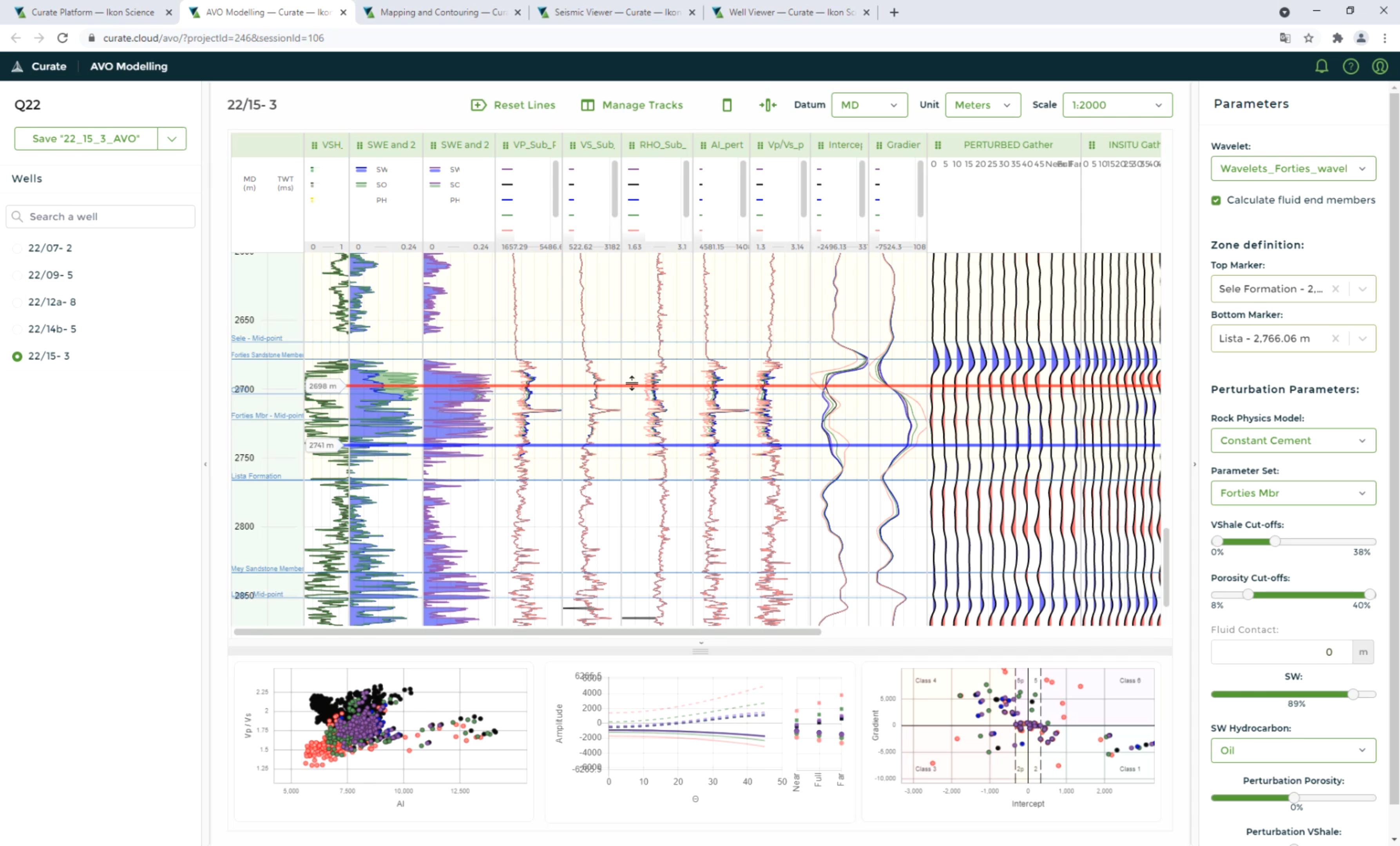
E&P: What are some of the biggest innovation challenges in the oil and gas industry?
Molazemi: The oil and gas industry is going through several transitions that are happening at the same time: firstly, the energy transition, seeing oil and gas companies diversifying and rebranding to become energy companies, and secondly, the digital transformation as well as business model transformation.
These fast-paced changes are taking the oil and gas industry out of its comfort zone. We have seen considerable reluctance to invest in scaling up relatively untested low and zero GHG [greenhouse-gas] solutions and the required long-term infrastructure to enable energy transition. R&D investment and deployment are required to reduce costs and close critical competence and technology gaps to tackle these global transitions.
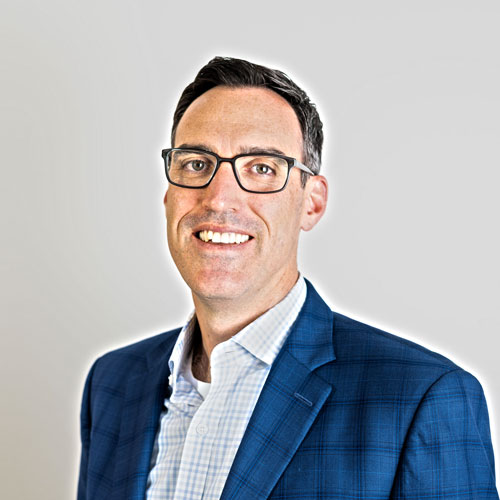
EnerCorp
Freeman: One of the biggest challenges for technology innovation in oil and gas is risk, whether real or perceived.
Most service companies developing innovations are concerned about the financial risk associated with making technology investments. Many development projects take well over a year to produce a marketable outcome and can consume vast capital resources. If the market adoption is slow, the ROI [return on investment] may never be realized.
For operators, there is operational risk to implementing new innovations. Often these new technologies represent a significant change from standard practices, and operational failure could result in missing delivery of the well on time and on budget with expected production levels.
The best way to mitigate these risks is collaboration between the service company and the operator early in the development cycle. This helps the service company ensure they have a market for their technology, and it helps the operator ensure their concerns and operational risks are being addressed.
Thomson: Intimidation in selecting digital solutions can hinder companies’ digital transformations, which can also have a bottom-line impact. Understanding a company’s data and the four Vs (volume, variety, veracity and velocity) as well as making the correct technology choices at the onset are the industry’s greatest challenges. These decisions and choices are important and can’t be changed easily once a path is chosen, which is why it is critical to engage experienced data consultants in this decision process.
Our knowledge management system, Curate, has the flexibility to store most subsurface data types and connect to existing sources, from traditional databases and applications to unstructured systems and data lakes, allowing a single interface for end users while making the correct architectural decisions depending on the data utilized.
E&P: What excites you most about the future of the industry?
Molazemi: While the energy industry is going through significant transitions, we have a short window of opportunity to close the gap to meet Paris ambitions. This is challenging but at the same time exciting. With fast-growing digital technology and low-carbon solutions, we have the opportunity to mobilize all forces toward a green energy transformation. We are excited about how we in DNV can and will contribute to supporting these global transitions.
Freeman: Our industry has a rich history of innovation and has done a remarkable job of meeting the world’s need for affordable energy. By doing this, we have improved the quality of life for billions of people, and I am very proud to be a part of an industry that delivers such precious resources.
For the future, I am most excited about meeting the challenges for clean and economical energy demands for even more people over the coming decades. Energy production and consumption, regardless of how it is generated, has an impact on our environment. EnerCorp and many of our industry peers are working on technologies that will reduce the carbon footprint of producing and consuming hydrocarbons.
I am excited to see the evolution of these clean technologies over the coming years and to see how we can improve the lives of those living in areas of energy poverty today.
Thomson: Advanced data analytics can significantly improve geological interpretations of the subsurface, enable smarter well placement, optimize field performance and support decarbonization and CO2 storage decisions.
There is also a wealth of unstructured data that have been accumulating for decades. Much of these data will remain largely underutilized in decision-making until analytics are adopted to not only handle large volumes, but the dynamic nature of these data. Data analytics will give companies the ability to move toward dynamic models of the subsurface, allowing faster decisions, increased efficiency and higher profitability.
Recommended Reading
E&P Highlights: Feb. 26, 2024
2024-02-26 - Here’s a roundup of the latest E&P headlines, including interest in some projects changing hands and new contract awards.
E&P Highlights: March 15, 2024
2024-03-15 - Here’s a roundup of the latest E&P headlines, including a new discovery and offshore contract awards.
Deepwater Roundup 2024: Offshore Africa
2024-04-02 - Offshore Africa, new projects are progressing, with a number of high-reserve offshore developments being planned in countries not typically known for deepwater activity, such as Phase 2 of the Baleine project on the Ivory Coast.
Shell Taps TechnipFMC for 20K System for Sparta
2024-02-19 - The deepwater greenfield project in the Gulf of Mexico targets reserves in the high-pressure Paleogene reservoir.
E&P Highlights: April 8, 2024
2024-04-08 - Here’s a roundup of the latest E&P headlines, including new contract awards and a product launch.




